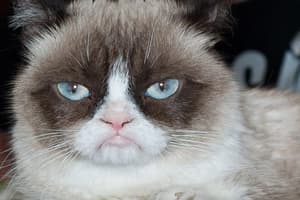Podcast
Questions and Answers
What is price discrimination?
What is price discrimination?
Price discrimination refers to the charging of different prices by the monopolist for the same product.
How is the market price or equilibrium price determined in perfect competition?
How is the market price or equilibrium price determined in perfect competition?
In perfect competition, price is determined through the intersection of market demand and market supply curve. When market supply equals market demand, equilibrium is achieved.
Explain the equilibrium conditions or profit maximizing condition of the perfect competitive firm.
Explain the equilibrium conditions or profit maximizing condition of the perfect competitive firm.
A perfect competitive firm is in equilibrium when MR (Marginal Revenue) equals MC (Marginal Cost) and MC cuts MR from below. This occurs when the total profit is maximum at a specific level of output.
How does a competitive firm attain equilibrium in the short run?
How does a competitive firm attain equilibrium in the short run?
What is the relation between AR, MR, and price elasticity of demand (ep)?
What is the relation between AR, MR, and price elasticity of demand (ep)?
How does a monopolist attain equilibrium in the short run?
How does a monopolist attain equilibrium in the short run?
Compare between Perfect Competition & Monopoly with respect to their characteristics.
Compare between Perfect Competition & Monopoly with respect to their characteristics.
How, according to the Cournot model, does a firm attain equilibrium?
How, according to the Cournot model, does a firm attain equilibrium?
How does a monopolistically competitive firm attain equilibrium in the short run?
How does a monopolistically competitive firm attain equilibrium in the short run?
Define market and explain its functions and characteristics.
Define market and explain its functions and characteristics.
What are the different types of markets and describe them?
What are the different types of markets and describe them?
What is meant by market price?
What is meant by market price?
Market price is constant and influenced by demand. (True/False)
Market price is constant and influenced by demand. (True/False)
What is meant by shutdown point? Minimum price of the AVC is called the _______ Point.
What is meant by shutdown point? Minimum price of the AVC is called the _______ Point.
Explain the conditions for profit maximization of a firm.
Explain the conditions for profit maximization of a firm.
Match the following: Market types with their descriptions:
Match the following: Market types with their descriptions:
Flashcards are hidden until you start studying
Study Notes
Market and its Characteristics
- A market is a social institution where buyers and sellers interact to exchange goods and services.
- The two main functions of a market are:
- Bridging the gap between production and consumption
- Determining the price of a commodity through the interaction of demand and supply
Types of Markets
- Classified according to geographical extent:
- Local market: commodities are sold near their place of production
- National market: commodities are sold throughout the country
- International market: commodities are sold in other countries
- Classified according to the type of commodity:
- Different markets for different commodities
- Classified according to time period:
- Very short period market: supply is assumed to be constant
- Short period market: firms can change their variable factors of production
- Long period market: firms can change their fixed factors of production and technology
- Very long period market: technology changes and new firms enter the market
- Classified according to competition:
- Perfect competition: many buyers and sellers, homogeneous product, free entry and exit
- Monopoly: one seller, many buyers
- Monopolistic competition: many sellers, differentiated products
- Oligopoly: few sellers, interdependent decision-making
Market Price and Normal Price
- Market price: the short-term price determined by the interaction of demand and supply
- Normal price: the long-term price determined by the average cost of production
Shutdown Point and Break-Even Point
- Shutdown point: the minimum price at which a firm is willing to operate in the short run
- Break-even point: the point at which a firm's total revenue equals its total cost, and it earns normal profit
Demand Curve and AR Curve
- In perfect competition, the demand curve is horizontal and the AR curve is parallel to the horizontal axis
- AR = TR/Q = P
Profit Maximization
- A firm maximizes its profit when:
- MR = MC
- MC cuts the MR curve from below
Perfect Competition
- Characteristics:
- Many buyers and sellers
- Homogeneous product
- Free entry and exit
- Perfect knowledge
- Perfect mobility of factors
- No transport cost
- Condition of profit maximization:
- MR = MC
- MC cuts the MR curve from below
- Short run and long run:
- In the short run, a firm can earn super normal profit or loss
- In the long run, a firm earns normal profit
Other Concepts
- Natural monopoly: a single firm can supply the entire market at a lower cost than multiple firms
- Price discrimination: charging different prices for the same product to different buyers
- Equilibrium price: the price at which the market demand equals the market supply### Monopoly and Monopolistic Competition
- A monopolist faces a downward sloping demand curve or AR curve.
- The corresponding MR curve is also downward sloping and lies below the AR curve.
- A monopolist can earn super normal profit or normal profit in the short run.
- The equilibrium of a monopolist is determined at the level of production where MR = MC.
- The sufficient condition for equilibrium is that the MC curve must cut the MR curve from below.
Determination of Equilibrium Price and Output under Monopoly
- The equilibrium price and output are determined where MR = MC.
- The monopolist earns super normal profit or normal profit in the short run.
- Super normal profit is earned when P > AC, and normal profit is earned when P = AC.
Comparison between Perfect Competition and Monopoly
- Number of Sellers: Perfect competition has an infinite number of sellers, while monopoly has a single seller.
- Nature of Product: Perfect competition has homogeneous products, while monopoly has a unique product with no close substitutes.
- Nature of Firms: Perfect competition has firms that are price takers, while monopoly has a single firm that is a price maker.
- Determination of Price and Output: Perfect competition has firms that determine only the level of output, while monopoly determines both price and output.
Cournot Model
- The Cournot model is based on the following assumptions:
- There are only two firms in the market.
- The two firms sell homogeneous products.
- When a firm chooses its profit-maximizing output, it assumes that the output of its rival remains constant.
- The marginal cost of production is zero.
- According to the Cournot model, each firm supplies 1/3rd of the market at a common price.
Criticism of Cournot Model
- The assumption of costless production is unrealistic.
- The model does not differentiate between the quality of goods produced by the two firms.
- The assumption that a firm chooses its profit-maximizing output while assuming that the output of its rival remains constant is unrealistic.
Monopolistic Competition
- A monopolistically competitive firm attains equilibrium in the short run in the same way as a monopoly.
- The equilibrium of a monopolistically competitive firm is determined at the level of production where MR = MC.
- The sufficient condition for equilibrium is that the MC curve must cut the MR curve from below.
Studying That Suits You
Use AI to generate personalized quizzes and flashcards to suit your learning preferences.



